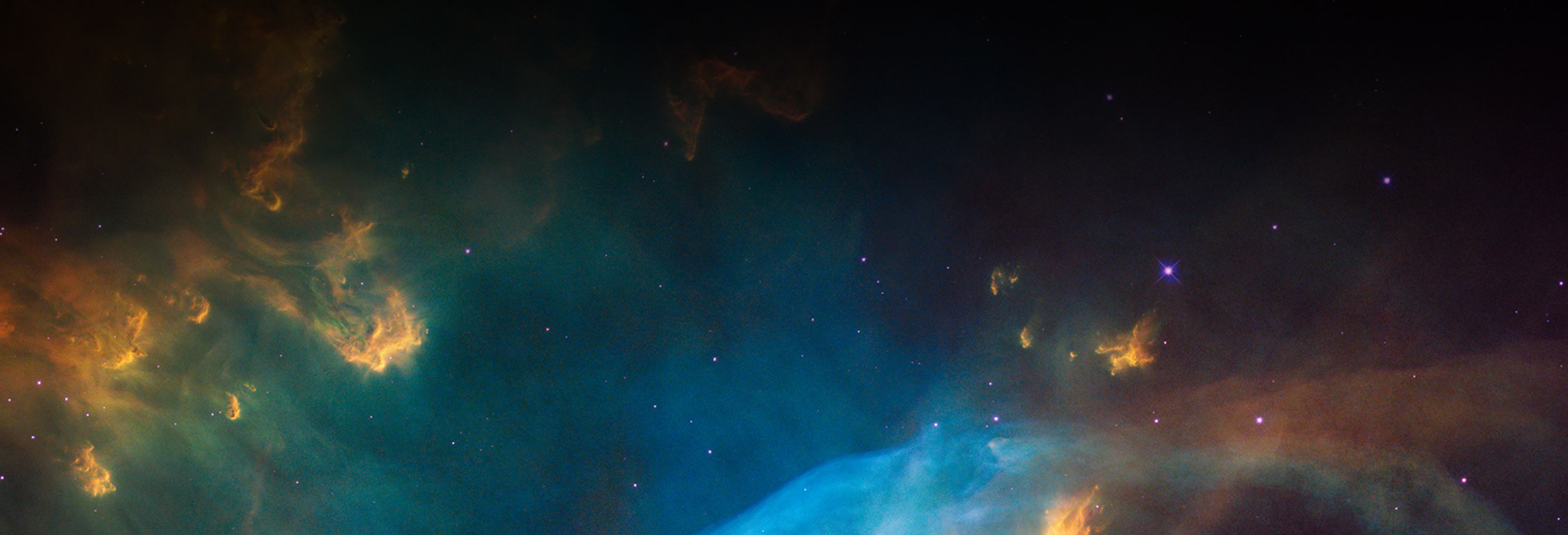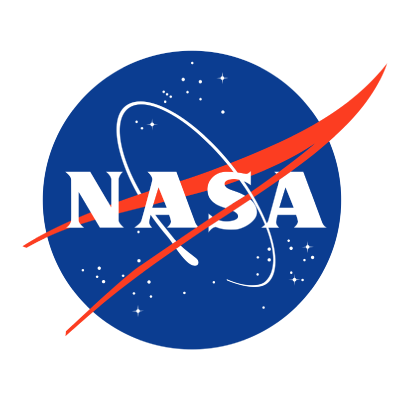Citations
Below are publications that cite the Astromaterials Data System. Our team continuously updates this list, but please let us know if we've missed one.
Do you have a publication that cites Astromat? Ensure its included on our citation list by emailing the Astromat Team at info @ astromat.org.
2024
- Elsila, J. E., Aponte, J. C., McLain, H. L., Simkus, D. N., Dworkin, J. P., Glavin, D. P., Zeigler, R. A., McCubbin, F. M., & the ANGSA Science Team. (2024). Soluble Organic Compounds and Cyanide in Apollo 17 Lunar Samples: Origins and Curation Effects. Journal of Geophysical Research: Planets, 129(4), e2023JE008133. https://doi.org/10.1029/2023JE008133
- Fulford, R. E., Golish, D. R., Lauretta, D. S., DellaGiustina, D. N., Meyer, S., Lunning, N., Snead, C., Righter, K., Dworkin, J. P., Bennett, C. A., Connolly Jr., H. C., Johnson, T., Polit, A. T., Haennecour, P., & Ryan, A. J. (2024). QRIS: A Quantitative Reflectance Imaging System for the Pristine Sample of Asteroid Bennu (No. arXiv:2402.18674). arXiv. http://arxiv.org/abs/2402.18674
- Hoppe, P., Leitner, J., Pignatari, M., & Amari, S. (2024). Isotope studies of presolar silicon carbide grains from supernovae: new constraints for hydrogen-ingestion supernova models. Monthly Notices of the Royal Astronomical Society, 532(1), 211–222. https://doi.org/10.1093/mnras/stae1523
- Lauretta, D. S., Connolly, H. C., Aebersold, J. E., Alexander, C. M. O., Ballouz, R., Barnes, J. J., Bates, H. C., Bennett, C. A., Blanche, L., Blumenfeld, E. H., Clemett, S. J., Cody, G. D., DellaGiustina, D. N., Dworkin, J. P., Eckley, S. A., Foustoukos, D. I., Franchi, I. A., Glavin, D. P., Greenwood, R. C., … the OSIRIS‐REx Sample Analysis Team. (2024). Asteroid (101955) Bennu in the laboratory: Properties of the sample collected by OSIRIS ‐ REx. Meteoritics & Planetary Science, maps.14227. https://doi.org/10.1111/maps.14227
- Que, X., Zhang, J., Chen, W., Ralph, J., & Ma, X. (2024). OpenMindat v1.0.0 R package: A machine interface to Mindat open data to facilitate data-intensive geoscience discoveries. https://doi.org/10.5194/egusphere-2024-1141
- Yui, H., Urashima, S., Onose, M., Morita, M., Komatani, S., Nakai, I., Abe, Y., Terada, Y., Homma, H., Motomura, K., Ichida, K., Yokoyama, T., Nagashima, K., Aléon, J., M. O’D. Alexander, C., Amari, S., Amelin, Y., Bajo, K., Bizzarro, M., … Yurimoto, H. (2024). Pyrrhotites in asteroid 162173 Ryugu: Records of the initial changes on their surfaces with aqueous alteration. Geochimica et Cosmochimica Acta, S0016703724003156. https://doi.org/10.1016/j.gca.2024.06.016
- Zhang, B., Chabot, N. L., & Rubin, A. E. (2024). Compositions of iron-meteorite parent bodies constrain the structure of the protoplanetary disk. Proceedings of the National Academy of Sciences, 121(23), e2306995121. https://doi.org/10.1073/pnas.2306995121
2023
- Bindi, L., & Cruciani, G. (Eds.). (2023). Celebrating the international year of mineralogy: progress and landmark discoveries of the last decades. Springer.
- Deng, Z., Schiller, M., Jackson, M. G., Millet, M.-A., Pan, L., Nikolajsen, K., Saji, N. S., Huang, D., & Bizzarro, M. (2023). Earth’s evolving geodynamic regime recorded by titanium isotopes. Nature, 621(7977), 100–104. https://doi.org/10.1038/s41586-023-06304-0
- Frossard, P., Bonnand, P., Boyet, M., & Bouvier, A. (2024). Role of redox conditions and thermal metamorphism in the preservation of Cr isotopic anomalies in components of non-carbonaceous chondrites. Geochimica et Cosmochimica Acta, 367, 165–178. https://doi.org/10.1016/j.gca.2023.12.022
- Luo, B., Wang, Z., Song, J., Qian, Y., He, Q., Li, Y., Head, J. W., Moynier, F., Xiao, L., Becker, H., Huang, B., Ruan, B., Hu, Y., Pan, F., Xu, C., Liu, W., Zong, K., Zhao, J., Zhang, W., … Zhang, H. (2023). The magmatic architecture and evolution of the Chang’e-5 lunar basalts. Nature Geoscience, 16(4), 301–308. https://doi.org/10.1038/s41561-023-01146-x
- Onyett, I. J., Schiller, M., Makhatadze, G. V., Deng, Z., Johansen, A., & Bizzarro, M. (2023). Silicon isotope constraints on terrestrial planet accretion. Nature, 619(7970), 539–544. https://doi.org/10.1038/s41586-023-06135-z
- Prabhu, A., Morrison, S. M., & Hazen, R. M. (2023). Mineral Informatics: Origins. In L. Bindi & G. Cruciani (Eds.), Celebrating the International Year of Mineralogy (pp. 39–68). Springer Nature Switzerland. https://doi.org/10.1007/978-3-031-28805-0_3
- Prissel, K., Fei, Y., & Strobel, T. A. (2023). Feiite: Synthesis, stability, and implications for its formation conditions in nature. American Mineralogist, 108(7), 1315–1321. https://doi.org/10.2138/am-2022-8633
- Sehlke, A., Sears, D. W. G., & the ANGSA Science Team. (2024). The Apollo 17 Regolith: Induced Thermoluminescence Evidence for Formation by a Single Event ∼100 Million Years Ago and Possibly the Presence of Tycho Material. Journal of Geophysical Research: Planets, 129(4), e2023JE008083. https://doi.org/10.1029/2023JE008083
- Yuan, J., Huang, H., Chen, Y., Yang, W., Tian, H., Zhang, D., & Zhang, H. (2023). Automatic Bulk Composition Analysis of Lunar Basalts: Novel Big-Data Algorithm for Energy-Dispersive X-ray Spectroscopy. ACS Earth and Space Chemistry, 7(2), 370–378. https://doi.org/10.1021/acsearthspacechem.2c00260
2022
- Gorce, J. S., Mittlefehldt, D. W., & Simon, J. I. (2022). Localized equilibrium and mineralogic effects on trace element distribution and mobility in highly metamorphosed Eucrite Elephant Moraine (EET) 90020. Geochimica et Cosmochimica Acta, 335, 256–271. https://doi.org/10.1016/j.gca.2022.08.034
- Johnston, S., Brandon, A., McLeod, C., Rankenburg, K., Becker, H., & Copeland, P. (2022). Nd isotope variation between the Earth–Moon system and enstatite chondrites. Nature, 611(7936), 501–506. https://doi.org/10.1038/s41586-022-05265-0
- Nicklas, R. W., Day, J. M. D., Gardner-Vandy, K. G., & Udry, A. (2022). Early silicic magmatism on a differentiated asteroid. Nature Geoscience, 15(9), 696–699. https://doi.org/10.1038/s41561-022-00996-1
- Torcivia, M. A., & Neal, C. R. (2022). Unraveling the Components Within Apollo 16 Ferroan Anorthosite Suite Cataclastic Anorthosite Sample 60025: Implications for the Lunar Magma Ocean Model. Journal of Geophysical Research: Planets, 127(2), e2020JE006799. https://doi.org/10.1029/2020JE006799
- Zhang, B., Chabot, N. L., & Rubin, A. E. (2022). Compositions of carbonaceous-type asteroidal cores in the early solar system. Science Advances, 8(37), eabo5781. https://doi.org/10.1126/sciadv.abo5781
- Zhang, D., Su, B., Chen, Y., Yang, W., Mao, Q., & Jia, L.-H. (2022). Titanium in olivine reveals low-Ti origin of the Chang’E-5 lunar basalts. Lithos, 414–415, 106639. https://doi.org/10.1016/j.lithos.2022.106639
2019-2021
- Brugman, K., Phillips, M. G., & Till, C. B. (2021). Experimental Determination of Mantle Solidi and Melt Compositions for Two Likely Rocky Exoplanet Compositions. Journal of Geophysical Research: Planets, 126(7), e2020JE006731. https://doi.org/10.1029/2020JE006731
- Norman, M. D., Jourdan, F., & Hui, S. S. M. (2019). Impact History and Regolith Evolution on the Moon: Geochemistry and Ages of Glasses from the Apollo 16 Site. Journal of Geophysical Research: Planets, 124(12), 3167–3180. https://doi.org/10.1029/2019JE006053
- Vogt, M., Trieloff, M., Ott, U., Hopp, J., & Schwarz, W. H. (2021). Solar noble gases in an iron meteorite indicate terrestrial mantle signatures derive from Earth’s core. Communications Earth & Environment, 2(1), 92. https://doi.org/10.1038/s43247-021-00162-2
- Xue, Z., Welsh, D. F., Neal, C. R., & Xiao, L. (2021). Understanding the textures of Apollo 11 high‐Ti mare basalts: A quantitative petrographic approach. Meteoritics & Planetary Science, 56(12), 2211–2229. https://doi.org/10.1111/maps.13767





